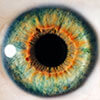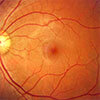Retinal Artery Occlusion
High Blood Pressure Can Affect Vision
Most people know high blood pressure and other vascular diseases pose risks to overall health, but many may not know that high blood pressure can affect vision by damaging arteries in the eye.
Branch retinal artery occlusion (BRAO), is a blockage of a small artery in the retina, the light-sensing nerve layer lining the back of the eye. The most common cause of BRAO is when fibrin, cholesterol or other plaque breaks off from another area of the body and is carried to the retina by the bloodstream.
Visual loss from retinal artery occlusion is equivalent to loss of function in other parts of the body from stroke. Unfortunately, unlike some other strokes, visual loss is not usually reversible, even with rehabilitation therapy.
Retinal Artery Occlusion
Blocked Retinal Artery Can Cause Serious Vision Loss
Visual loss from retinal artery occlusion is equivalent to loss of function in other parts of the body from stroke. Unfortunately, unlike some other strokes, visual loss is not usually reversible, even with rehabilitation therapy.
Branch retinal artery occlusion
Branch retinal artery occlusion (BRAO) is a blockage of a small artery in part of the retina, the light-sensing nerve layer lining the back of the eye.
Central vision is lost suddenly if the blocked retinal artery is one that nourishes the macula, the part of the retina responsible for fine sharp vision. Following BRAO, vision can range from normal (20/20) to barely detecting hand movement.
BRAO poses significant risks to vision. If you have had a branch retinal artery occlusion or have high blood pressure, regular visits to your eye doctor are essential.
Central retinal artery occlusion
Central retinal artery occlusion (CRAO) blocks the central retinal artery in your eye, that supplies blood to the retina.
The first sign of CRAO is a sudden and painless loss of vision that leaves you barely able to count fingers or determine light from dark.
CRAO usually occurs in people between ages 50 and 70. The most common medical problem associated with CRAO is arteriosclerosis, hardening of the arteries. Carotid artery disease is found in almost half the people with CRAO.
Immediate treatment can save some vision
Loss of vision can be permanent without immediate treatment. Retinal damage occurs after 90 minutes, but some vision may still be saved even 24 hours after symptoms begin. The goal of emergency treatment is to restore retinal blood flow, although this may not be successful.
After emergency treatment, you should have a thorough medical evaluation to determine the underlying cause of your arterial occlusion.









